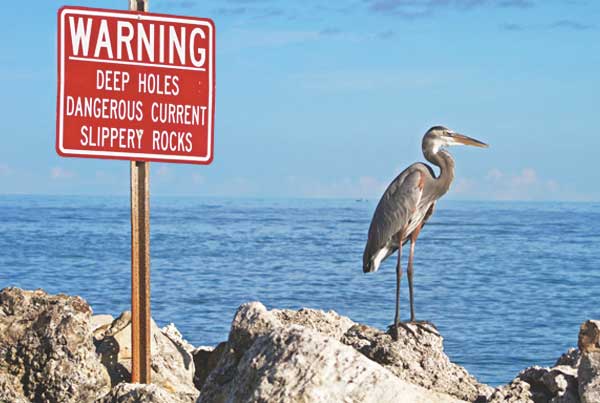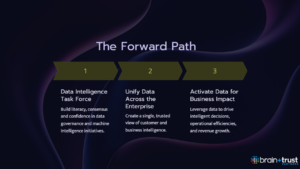Perhaps the most surreal new phrase in the American lexicon is “alternative facts” — introduced by Trump administration senior advisor Kellyanne Conway in a bizarre effort to explain or justify White House Press Secretary Sean Spicer’s demonstrably false insistence that the Trump inaugural had drawn a bigger crowd than any previous the anti-Trump women’s march the following day. The remark, and the mindset behind it, has been incredulously and widely reported on, angrily criticized, and wickedly mocked by many — and defended as “harmless” and “acceptable in a legal setting” by others.
The fact that such a remark originated with the White House is not just troubling; it is the most visible and high-profile example of a through-the-looking glass phenomenon that has taken hold in American culture. There are other manifestations — the most familiar and commonly reported of which is the “fake news” trend that many suggest influenced the 2016 US presidential election. To be sure, “fake news” is hardly new. But ‘alternative facts’ and ‘fake news’ require an audience willing to accept them in order to be effective — and that is the defining characteristic of this new phenomenon: audiences’ willingness — even, in some cases, preference — to believe stories that confirm their existing biases or beliefs even over demonstrable facts that counter those beliefs.

Post-Factual Age
We have entered an era not just about the preponderance of alternative facts, fake news, and bad information, but audiences’ increased desire — in some cases to the point of psychological urgency — to believe it if it reinforces their predisposed beliefs or opinions, or to dismiss facts that conflict with the narrative they want to believe. At Brain+Trust Partners, we call this new era the Post-Factual Age.
Post-Factualism: Not Just For Politicians
Business leaders would be foolish to consider post-factualism solely a political phenomenon, unlikely to impact their company; there are many manifestations from beyond the political sphere. Consider the recent experience of Fisher-Price. As the 2016 holiday shopping season began, a Photoshopped fake advertisement for a Fisher-Price “happy hour set” featuring barstools, a bar, plastic beer bottles, and depicting toddlers as both bartender and customers began making the rounds on social media channels.
Consumers who might be expected to know better defaulted instead to immediately believing the worst about the company, and took straight to angrily criticizing rather than merely asking. Fisher-Price spent much of the holiday season — critical for a company in their business — having to respond to individual consumers to assure them that it had not produced a toddler happy hour set.
Delta Airlines
Also recently, Delta Airlines suffered an inordinate amount of bad publicity and criticism after a passenger posted video and a story about how he and a friend were kicked off a Delta flight after speaking Arabic. The story was shared and distributed more than one million times, and angry respondents on social media began using the hashtag #BoycottDelta, which quickly became the number one trending topic on Twitter. But passengers on the flight soon began disputing the story, and Delta said in a statement that the men were kicked off the flight for disruptive behavior and shouting.
And, as further investigation revealed, the passenger who complained was a well known YouTube prankster who calls himself a “professional idiot” and had executed pranks on airlines before. Despite the man’s reputation for pranks (including several he was forced to publicly retract or walk back, and his YouTube channel being full of videos of airline-related pranks, some consumers are standing by the call to boycott the company.
McDonald’s
And in 2011, McDonald’s was forced to deny and denounce a photo hoax in which a McDonald’s store was alleged to have posted a sign charging a ‘security surcharge’ to African-American customers. The image of the sign containing a McDonald’s logo and a phone number to call with questions was shared millions of times, and began trending on Twitter as thousands of angry users began denouncing the company with the hashtag #seriouslymcdonalds.
Despite the fact that the 1-800 number listed on the sign actually was the KFC customer satisfaction number, and that such a policy would have been blatantly illegal, enough people took it seriously and believed it that McDonald’s was compelled to issue repeated statements denouncing the sign and trying to assure people it was a hoax.
Fisher-Price
It’s illegal to sell alcohol to minors — yet people believed that Fisher-Price had made a preschool bar and happy hour toy. A well-known YouTube prankster with a penchant for trying to get attention and a history of pranking airlines tells a story about discrimination that is quickly debunked by fellow passengers, but thousands of consumers pledge to boycott Delta anyway. A fake sign lists a competitor’s phone number describes a blatantly illegal act that would elicit massive government fines and sanctions, and yet thousands of people angrily castigated McDonald’s.
No matter how far a story seems to stretch the limits of credulity, there are audiences that accept it without question and promise never to buy the company’s products again.
Truly, we’re through the looking glass.
Clearly, when even the facts don’t always matter anymore, organizational reputation has become an even more complex and even intimidating practice than ever before — and the work of protecting your company’s reputation has never been so important. How should companies prepare to act in the post-factual age in order to best defend their brands? How do brands position themselves to survive in this new era?
You Must Think Beyond Communications
Traditional “crisis management” plans emphasize the company’s communications team in quickly resolving challenges to a brand’s reputation. We have always been taught that a robust and frequent communication of the facts is the best way to debunk a bad rumor or diffuse false accusations. But when even having the verifiable, documented facts available isn’t enough anymore to change people’s opinions from what they want to believe, and when the source of the accurate information is frequently attacked as “biased” or disingenuous, having the facts on your side is probably not enough. And when facts aren’t enough, businesses must rely on the strength of the relationships they have built with their customers and communities — soliciting aid from outside in defense of their reputations.
Brand Self-Defense
Those relationships go beyond the efforts of the communications team. To be sure, communications still plays a critical and probably lead role in a post-factual reputation effort once it begins. But all the pre-work needed to build those relationships, to generate good will and the benefit of the doubt, and to galvanize your advocates and supporters in your times of need relies on the whole business, not just communications. This is perhaps the most important lesson of the post-factual era: brand self-defense requires the whole company, all the time — not just the communications team once something bad is happening.
Integrating the efforts of communications, public affairs, customer service/experience, employee relations, and business strategy is absolutely necessary. If you look at post-factualism as an ongoing strategic reality rather than a crisis to be planned for and a program to be run only when needed, your business will not be ready for when — not if — you are hit with this kind of attack.
But Communications Still Leads
This isn’t to say that a post-factual attack isn’t a communications issue. It is. It will play out on media channels and social platforms, and you need a team leading the response that understands these channels and has the ability to quickly craft interactions with audiences. Even before an attack hits, as you’re developing your preventative strategy, the Chief Communications Officer and the communications team must be front and center.The communications team is a strategic advisor to your business, not a press release-generating group. It has insight into the behaviors, biases and perspectives of a number of audiences – as well as the tools to understand how issues are moving. This team should lead or co-lead your post-factual efforts.
While your team has already created its narrative or story arc, the communications team can help with memorable, repeatable elements that need to be consistent across all of your constituents: employees, press, advocates, suppliers, customers, and other audiences.
What Brands Must Do: A Brief Post-Factual Survival Guide
Once you’ve shifted your mindset to whole-company branding and reputation protection, it’s time to begin developing your plan of attack. There are two fronts in this battle: preventative maintenance, and attack response. We’ll go into much greater detail on these steps in our upcoming white paper, “Brand Survival In The Post-Factual Age”, covering off both preventative and responsive considerations and steps to protect your brand and survive this new era as unscathed as possible.
At Brain+Trust Partners, we’re focused on helping your company connect to customers with the best-in-class tools, teams, and technologies possible. Our level of experience and expertise is here to serve your brand with common sense and long-term vision.







